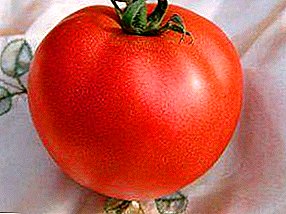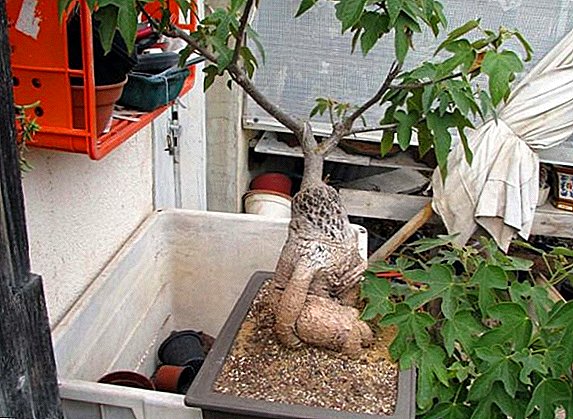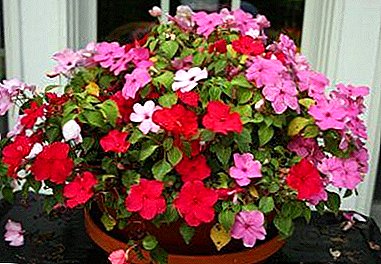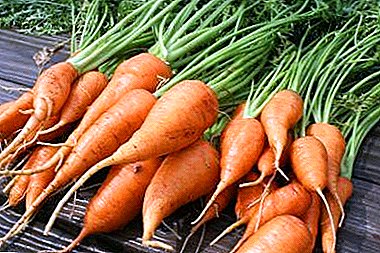
Such a vegetable, like carrots, has become firmly established in our culinary traditions; not only the first and second courses, but also desserts often do not do without it. In addition, it is a storehouse of vitamins and other nutrients.
All housewives want to have fresh vegetables in quick availability. However, it is not always possible to keep this valuable root vegetable until the next harvest.
Is it efficiently stored in plastic bags and what is the most optimal storage method? This article will tell.
Beneficial features
Carrot is a popular vegetable that is very easy to grow.. The culture belongs to the biennial herbaceous plants of the celery family, it reaches 30 cm. The root crop is eaten, although it was originally grown for the aromatic leaves and seeds. Culture was introduced to Europe in the 10-13th century and firmly established in the European food culture. It is widely distributed on all continents, cultivated about 60 species.
In addition to excellent taste, it is also a very useful product. The content of vitamins B, PP, C, E, K makes this vegetable valuable and nutritious, and the carotene contained in carrots in the human body turns into vitamin A, which is extremely important for the immune system, vision, lungs, and skin. In addition to vitamins, it contains minerals such as:
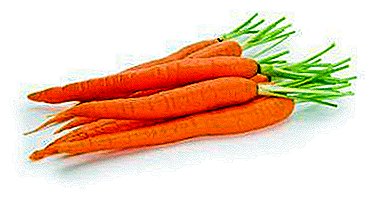 potassium;
potassium;- iron;
- phosphorus;
- magnesium;
- cobalt;
- copper;
- chromium;
- zinc;
- fluorine;
- nickel.
Vegetable contains 1.3% protein and 7% carbohydrates.
Watch the video about the beneficial properties of carrots:
The suitability of this vegetable to the long preservation of its properties
Carrots are vegetables that are very capricious during storage.. It is difficult to choose the optimal conditions for long-term storage of these root crops, because, unfortunately, they often rot or dry up, losing not only taste, but also their biological and energy value. The optimal conditions for storing carrots are temperatures ranging from 0 to +3 degrees Celsius, with a relative humidity of up to 90% and good ventilation.
For a longer preservation, root crops can be frozen, so they lie for about 9-12 months. It is best to pre-rub them and put in airtight containers or plastic packaging. If the farm has a cellar and there are a lot of carrots, its storage in the cellar will be an excellent choice. In this way it is possible to preserve the vegetable for a period of 6 to 12 months. In the cellar carrots are stored in several ways.:
- in wooden boxes;
- in sand;
- in sawdust;
- in onion feathers;
- carrot pyramids;
- in plastic bags.
Is it possible to keep the vegetable in plastic (cellophane) bags in the cellar or subfield?
Is it possible and how to store carrots in the basement in plastic bags? A good option for storing these vegetables is to pack them in plastic or plastic bags and place them in a basement..
So, for this method, only fresh and intact root vegetables are selected, well dried and cooled, which, after careful preparation, are sent to the subfield.
Advantages and disadvantages
 Although this method of storage is not the longest, but it is quite convenient and hygienic. And plastic bags are firmly established in our everyday life and are affordable and cheap.
Although this method of storage is not the longest, but it is quite convenient and hygienic. And plastic bags are firmly established in our everyday life and are affordable and cheap.
Carrots are not contaminated during such storage, but it will have to be monitored more often than when stored by other means, because polyethylene itself does not allow air to pass through, so you should be careful when packing to make ventilation holes large enough.
Training
Timely harvesting is important for successful long-term vegetable storage.. It is necessary to dig it up without tightening it until frost, because already at -3 degrees Celsius gray root can appear on the roots and storage of such carrots will not be long.
The growth of culture stops already at +4 degrees Celsius, therefore it is impractical to keep it in the ground further. However, early harvest is also not worth it, because the transfer of root crops from warm soil to the cold conditions of the cellar can also cause significant losses due to rotting.
It should also take into account the variety of carrots, because the harvest period of early and late ripening varieties will be different. A signal for harvesting experienced gardeners consider yellowing of the lower leaves of carrots. It is best to dig a crop with a shovel, carefully removing it from the soil, holding it by the tops and shaking off the remnants of the soil. After drying out the soil residues on carrots, the tops should be immediately cut off so that the nutrients do not leave the vegetable, turning into the tops.
Also recommend digging this vegetable in good weather.. Before storing it, it should be dried for 10-14 days, only dry, clean, undamaged specimens should be taken for storage.
For such a storage method, it is necessary to have a cellar, in which a constant temperature and humidity is maintained, plastic bags of any size. If the harvest is very large, packages suitable for 20 kg of vegetables are also suitable.
How to save?
How to store in vacuum bags?
It is not recommended to store carrots in vacuum bags in the cellar., only in the refrigerator, and even then it will be possible for a while, as the roots emit carbon dioxide and can deteriorate.
In the freezer, you can also do this with whole and shredded carrots. In this case, the shelf life will be quite long, up to six months. Instead of vacuum bags, you can use food wrap, which should be wrapped around each root crop.
In polyethylene
At the bottom of the package, it is recommended to make holes, and not to tie the top tightly, put it on the stand. Periodically check the status of the crop, mainly damage to long-term storage may accumulate condensate. In this case, the carrots are dried and put in dry clean bags.
Thus, the roots can be maintained for a period of about 4 months.
Watch the video on how to prepare carrots for storage in packages:
Is it possible to keep with beets?
Both types of root vegetables have similar storage requirements in the cellar. Both vegetables are vulnerable to freezing, humidity should also be about 90%, and temperatures should range from 0 to +3 degrees Celsius. If the beets can be stored together with potatoes, the carrots require separate storage.. Otherwise, the requirements are the same: dry and clean root vegetables are placed in bags with holes at the bottom, which should not be tied and laid in the cellar.
IMPORTANT! As well as carrots, beets should often be checked for the presence of condensate or damaged specimens.
Possible problems
 Storing carrots in plastic packaging is a good way to save the harvest for the winter.however, it will not be possible to do this for the longest term. But the vegetables will be clean enough and they do not have to be washed for a long time, as, for example, when stored in clay or sawdust.
Storing carrots in plastic packaging is a good way to save the harvest for the winter.however, it will not be possible to do this for the longest term. But the vegetables will be clean enough and they do not have to be washed for a long time, as, for example, when stored in clay or sawdust.
Plastic bags are also affordable and inexpensive goods. However, it will be necessary to revise the harvest in the cellar more often, because condensate will inevitably accumulate, especially if the cellar is not sufficiently reliable, is subjected to flooding or other adverse actions outside. Storage in a cellar in sawdust or clay is much more reliable and durable, vegetables can lie intact for a year, because clay and sawdust protect them from possible temperature and humidity drops.
Conclusion
Knowing the simple rules for storing carrots, you can provide yourself with tasty and healthy vegetables for the whole winter. However, although the method of storage in bags is not, unfortunately, the most durable, it has several advantages, such as hygiene, easy storage and low cost packaging.


 potassium;
potassium;